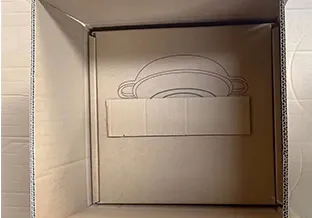
Exploring the Benefits of Using a Cast Iron Skillet for Every Home Cook
The Timeless Charm of Original Cast Iron Skillets
In the world of culinary tools, few pieces have stood the test of time quite like the original cast iron skillet. These robust kitchen essentials have been gracing stovetops and campfires since the 1800s, beloved by chefs and home cooks alike for their versatility and durability. As we explore the history, benefits, and care of cast iron skillets, it becomes clear why they remain a staple in kitchens today.
A Historical Overview
The origins of cast iron cookware can be traced back to China around the 5th century B.C. However, it wasn't until the 18th century that the material made its way into European kitchens, specifically in Britain and then the Americas. Companies like Lodge Manufacturing, established in 1896, began producing cast iron skillets that quickly gained popularity. These skillets became prized possessions in many households, often handed down through generations, each carrying the stories and memories of countless meals.
Unmatched Versatility
One of the key reasons cast iron skillets have remained popular is their unparalleled versatility. They can be used on virtually any cooking surface, including gas stoves, electric burners, induction cooktops, and even open flames. They excel in numerous cooking techniques, from frying and sautéing to baking and roasting. A cast iron skillet can go seamlessly from stovetop to oven, making it ideal for recipes that start with browning on the stove and finish in the oven, such as cornbread or frittatas.
Moreover, cast iron skillets are perfect for searing meats. Their ability to retain and distribute heat evenly creates a beautiful crust on steak or chicken, while their excellent heat retention ensures that food stays warm long after it has been removed from the heat source.
original cast iron skillet

Health Benefits
Cooking with cast iron also has potential health benefits. When seasoned properly, these skillets develop a natural non-stick surface that requires little to no synthetic coatings, providing a healthier alternative to non-stick pans. Additionally, trace amounts of iron can leach into the food, which may be beneficial for those with iron deficiencies. However, this natural process means that individuals watching their iron intake should use cast iron judiciously.
Caring for a Cast Iron Skillet
To ensure longevity, proper care is crucial for maintaining a cast iron skillet. While they are durable, they require a little extra attention compared to other cookware. After each use, it is best to hand wash the skillet with mild soap and warm water, avoiding excessive scrubbing that can damage the seasoning. After drying, it's important to apply a light coat of oil to keep the skillet moist and to prevent rust. Over time, with consistent use and care, the skillet’s surface becomes increasingly non-stick, showcasing the hallmark of a well-loved piece.
The Future of Cast Iron
As we embrace trends in sustainability and cooking from scratch, the original cast iron skillet is experiencing a renaissance in modern kitchens. Its longevity and versatility make it an environmentally friendly choice, reducing the need for frequently replacing non-stick cookware. Furthermore, as more people discover the joys of cooking at home, the cast iron skillet provides a reliable companion for crafting flavorful dishes.
In conclusion, the original cast iron skillet embodies a rich history intertwined with culinary creativity. Its unmatched versatility and health benefits, combined with the charm of traditional cooking, ensure that it remains a cherished choice for generations to come. Whether you are an experienced chef or a novice cook, investing in a cast iron skillet is a decision that promises to enhance your cooking experience and connect you to the age-old tradition of home-cooked meals.
-
Season Cast Iron Perfectly with GPT-4 Turbo TipsNewsAug.01,2025
-
High Quality Cast Iron Cookware - Baixiang County Zhongda MachineryNewsAug.01,2025
-
Premium Cast Iron Pan: Durable & Perfect HeatNewsAug.01,2025
-
High Quality Kitchen Durable Black Round Cast Iron Cookware Pancake Crepe Pan-Baixiang County Zhongda Machinery Manufacturing Co., Ltd.NewsAug.01,2025
-
Cast Iron Cookware - Baixiang County Zhongda Machinery | Nonstick, Heat ResistanceNewsAug.01,2025
-
High Quality Kitchen Durable Black Round Cast Iron Cookware - Baixiang County Zhongda Machinery | Non-Stick, Heat Retention, DurableNewsJul.31,2025


